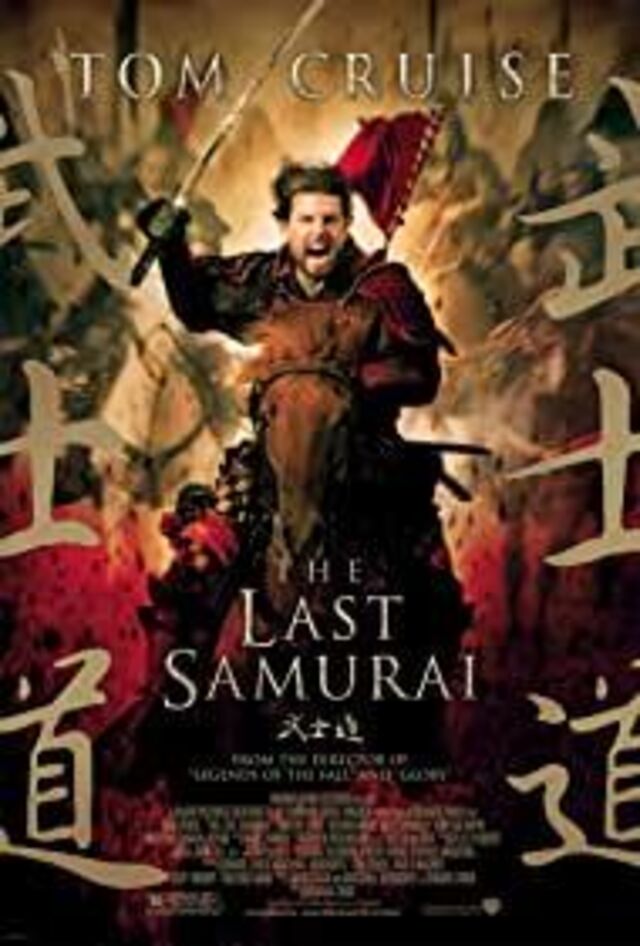Budget
$140,000,000 (estimated)
Gross US & Canada
$111,127,263
Opening weekend US & Canada
$24,271,354
Gross worldwide
$454,627,263

Budget
$140,000,000 (estimated)
Gross US & Canada
$111,127,263
Opening weekend US & Canada
$24,271,354
Gross worldwide
$454,627,263
Movie reviews
( 106 )
Add reviews
By Pedro 2022-04-23 07:01:09
The Meiji Restoration and the Last Samurai
The American film "The Last Samurai" represents Westerners (such as Koizumi Yakumo)'s views on Japan, samurai and Bushido and important changes in Japanese society. It is a typical Hollywood-style commercial blockbuster, directed by Edward Z. Wick is more attentive, Tom is also very hardworking, Xiaoxueyun's beautiful performance is a highlight, Watanabe Ken and Sanada Hiroyuki's performances are quite satisfactory, and the photography is also very good, can it not be beautiful to shoot in a...
By Eli 2022-04-23 07:01:09
Compared to knights and samurai, chivalry? It's just a fairy tale for adults.
Bushido, which is somewhat similar to chivalry, makes it easier for Europeans and Americans to understand, while chivalry is just a fairy tale for adults. Another interpretation of gangsters seems to be only the traditional Chinese characteristics of ancient literati festivals. The dynasty has endured for a long time. Everyone advocates reading and becoming an official. Scholars have been admired roles in all dynasties. The young lady of the brothel is welcome, thieves do not commit crimes,...
By Spencer 2022-04-23 07:01:09
I read it in college, but only remember a few symbols.
Read "World History" and know that during the Meiji Restoration, the Japanese samurai and the emperor's army had such a history of war. Looking at it again, it is right, and it is more thorough.
The rise or reform of every country is faced with the problem of contradiction between tradition and modernity. This is the case with Japan's samurai era and its modernization, China's Hundred Days Reform, and the May Fourth New...
By Lina 2022-04-23 07:01:09
"Photography sucks people's souls", there was such a saying when the camera became popular. After watching this movie, I suddenly felt like a prophecy. With the rampant guns and guns, the spirit of Bushido is also being crushed, like the flying cherry blossoms, wandering without knowing where to go. Now civilization has liberated the human body and satisfied more human desires, but it has also exiled the human soul, and the spiritual value has gradually disappeared, becoming more like a...
By Elenora 2022-04-23 07:01:09
Trisolaran Earth Culture in the Age of Deterrence
As far as the film itself is concerned, it is very good, and it also shows the spiritual core of the samurai just right. The strength of the American film industry is really strong. In addition, the film costumes are well-made and exquisite, and the performances of Japanese actors complement each other. It is one of Tom's masterpieces.
There are several flaws. First of all, although the Japanese villages, farmland and cherry blossoms in the film are very Japanese, the...
User comments
( 87 )
Add comments
By Lottie 2023-09-11 10:13:43
As a commercial film, it looks good, but the ending is obviously a failure. The characters are heavily masked. It would be better if the Eastern and Western cultures were not just a simple...
By Eliane 2023-09-05 10:06:30
The theme of the film should be the adherence to the belief, not the discussion of the right and wrong of tradition and innovation. It is indeed a blockbuster style, but some bridges are still...
By Pamela 2023-08-27 22:39:08
The ending is a little weaker. But most of the process is still very emotional. Of course, there will be misunderstandings or distortions of the East by Westerners, but the performance of Japanese actors in this is very good, not inferior to Tom, except for Sanada Hiroyuki. In general, it doesn't feel like the two sides of the domestic co-production film do not...
By Toni 2023-08-13 16:06:07
There are many things to comprehend, the contrast between Chinese and Japanese Westernization, the disputes between tradition and modernity, the true meaning of Bushido and so on. It's a culture clash movie that deserves study. Of course, Tommy also played a bit more. Eduard Zweig another epic...
By Skyla 2023-07-30 12:42:20
I once heard a sentence: "A good movie will make you listen to the ending song for a long time and can't extricate yourself." This movie is such an unexpected and wonderful collision of tradition and modernity. From the perspective of Westerners, the spirit of Japanese Bushido is described. This spirit is noble and worthwhile. Respect for the soundtrack of this film is quite good, half of the time I saw it, I was thinking that a western director could make Japanese culture to this effect. It's...
Algren: [shouting] What do you want from me?
Katsumoto: What do you want for yourself?
Algren: I have questions.
Katsumoto: Questions come later.
Katsumoto: When I took this, you were my enemy.